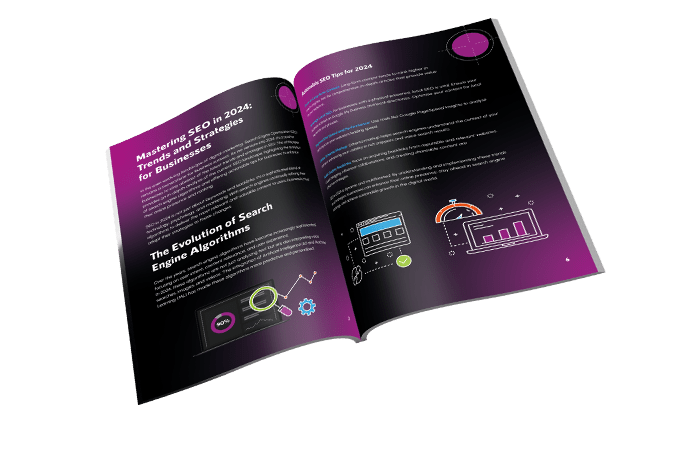News
Google Algorithm Changes
2015 Updates
Panda 4.2 (#28)
July 17, 2015
Google announced what was most likely a Panda data refresh, saying that it could take months to fully roll out. The immediate impact was unclear, and there were no clear signs of a major algorithm update.
The Quality Update
May 3, 2015
After many reports of large-scale ranking changes, originally dubbed “Phantom 2”, Google acknowledged a core algorithm change impacting “quality signals”. This update seems to have had a broad impact, but Google didn’t reveal any specifics about the nature of the signals involved.
Mobile Update AKA “Mobilegeddon”
April 22, 2015
In a rare move, Google pre-announced an algorithm update, telling us that mobile rankings would differ for mobile-friendly sites starting on April 21st. The impact of this update was, in the short-term, much smaller than expected, and our data showed that algorithm flux peaked on April 22nd.
Unnamed Update
February 4, 2015
Multiple SERP-trackers and many webmasters reported major flux in Google SERPs. Speculation ranged from an e-commerce focused update to a mobile usability update. Google did not officially confirm an update.
2014 Updates
Pigeon Expands (UK, CA, AU)
December 22, 2014
Google’s major local algorithm update, dubbed “Pigeon”, expanded to the United Kingdom, Canada, and Australia. The original update hit the United States in July 2014. The update was confirmed on the 22nd but may have rolled out as early as the 19th
Penguin Everflux
December 10, 2014
A Google representative said that Penguin had shifted to continuous updates, moving away from infrequent, major updates. While the exact timeline was unclear, this claim seemed to fit ongoing flux after Penguin 3.0 (including unconfirmed claims of a Penguin 3.1).
Pirate 2.0
October 21, 2014
More than two years after the original DMCA/”Pirate” update, Google launched another update to combat software and digital media piracy. This update was highly targeted, causing dramatic drops in ranking to a relatively small group of sites.
Penguin 3.0
October 17, 2014
More than a year after the previous Penguin update (2.1), Google launched a Penguin refresh. This update appeared to be smaller than expected (<1% of US/English queries affected) and was probably data-only (not a new Penguin algorithm). The timing of the update was unclear, especially internationally, and Google claimed it was spread out over “weeks”.
“In The News” Box
October 2014
Google made what looked like a display change to News-box results, but later announced that they had expanded news links to a much larger set of potential sites. The presence of news results in SERPs also spiked, and major news sites reported substantial traffic changes.
Panda 4.1 (#27)
September 23, 2014
Google announced a significant Panda update, which included an algorithmic component. They estimated the impact at 3-5% of queries affected. Given the “slow rollout,” the exact timing was unclear.
Authorship Removed
August 28, 2014
Following up on the June 28th drop of authorship photos, Google announced that they would be completely removing authorship markup (and would no longer process it). By the next morning, authorship bylines had disappeared from all SERPs.
HTTPS/SSL Update
August 6, 2014
After months of speculation, Google announced that they would be giving preference to secure sites, and that adding encryption would provide a “lightweight” rankings boost. They stressed that this boost would start out small, but implied it might increase if the changed proved to be positive.
Pigeon
July 24, 2014
Google shook the local SEO world with an update that dramatically altered some local results and modified how they handle and interpret location cues. Google claimed that Pigeon created closer ties between the local algorithm and core algorithm(s).
Authorship Photo Drop
June 28, 2014
John Mueller made a surprise announcement (on June 25th) that Google would be dropping all authorship photos from SERPs (after heavily promoting authorship as a connection to Google+). The drop was complete around June 28th.
Payday Loan 3.0
June 12, 2014
Less than a month after the Payday Loan 2.0 anti-spam update, Google launched another major iteration. Official statements suggested that 2.0 targeted specific sites, while 3.0 targeted spammy queries.
Panda 4.0 (#26)
May 19, 2014
Google confirmed a major Panda update that likely included both an algorithm update and a data refresh. Officially, about 7.5% of English-language queries were affected. While Matt Cutts said it began rolling out on 5/20, our data strongly suggests it started earlier.
Payday Loan 2.
May 16, 2014
Just prior to Panda 4.0, Google updated it’s “payday loan” algorithm, which targets especially spammy queries. The exact date of the roll-out was unclear (Google said “this past weekend” on 5/20), and the back-to-back updates made the details difficult to sort out.
Unnamed Update
March 24, 2014
Major algorithm flux trackers and webmaster chatter spiked around 3/24-3/25, and some speculated that the new, “softer” Panda update had arrived. Many sites reported ranking changes, but this update was never confirmed by Google.
Page Layout #3
February 6, 2014
Google “refreshed” their page layout algorithm, also known as “top heavy”. Originally launched in January 2012, the page layout algorithm penalizes sites with too many ads above the fold.
2013 Updates
Authorship Shake-up
December 19, 2013
As predicted by Matt Cutts at Pubcon Las Vegas, authorship mark-up disappeared from roughly 15% of queries over a period of about a month. The fall bottomed out around December 19th, but the numbers remain volatile and have not recovered to earlier highs.
Unnamed Update
December 17, 2013
Almost all global flux trackers registered historically high activity. Google would not confirm an update, suggesting that they avoid updates near the holidays. MozCast also registered a rise in some Partial-Match Domains (PMDs), but the patterns were unclear.
Unnamed Update
November 14, 2013
Multiple Google trackers picked up unusual activity, which co-occurred with a report of widespread DNS errors in Google Webmaster Tools. Google did not confirm an update, and the cause and nature of this flux was unclear.
Penguin 2.1 (#5)
October 4, 2013
After a 4-1/2 month gap, Google launched another Penguin update. Given the 2.1 designation, this was probably a data update (primarily) and not a major change to the Penguin algorithm. The overall impact seemed to be moderate, although some webmasters reported being hit hard.
Hummingbird
August 20, 2013
Announced on September 26th, Google suggested that the “Hummingbird” update rolled out about a month earlier. Our best guess ties it to a MozCast spike on August 20th and many reports of flux from August 20-22. Hummingbird has been compared to Caffeine, and seems to be a core algorithm update that may power changes to semantic search and the Knowledge Graph for months to come.
In-depth Articles
August 6, 2013
Google added a new type of news result called “in-depth articles”, dedicated to more evergreen, long-form content. At launch, it included links to three articles, and appeared across about 3% of the searches that MozCast tracks.
Unnamed Update
July 26, 2013
MozCast tracked a large Friday spike (105° F), with other sources showing significant activity over the weekend. Google has not confirmed this update.
Knowledge Graph Expansion
July 19, 2013
Seemingly overnight, queries with Knowledge Graph (KG) entries expanded by more than half (+50.4%) across the MozCast data set, with more than a quarter of all searches showing some kind of KG entry.
Panda Recovery
July 18, 2013
Google confirmed a Panda update, but it was unclear whether this was one of the 10-day rolling updates or something new. The implication was that this was algorithmic and may have “softened” some previous Panda penalties.
Multi-Week Update
June 27, 2013
Google’s Matt Cutts tweeted a reply suggesting a “multi-week” algorithm update between roughly June 12th and “the week after July 4th”. The nature of the update was unclear, but there was massive rankings volatility during that time period, peaking on June 27th (according to MozCast data). It appears that Google may have been testing some changes that were later rolled back.
“Payday Loan” Update
June 11, 2013
Google announced a targeted algorithm update to take on niches with notoriously spammy results, specifically mentioning payday loans and porn. The update was announced on June 11th, but Matt Cutts suggested it would roll out over a 1-2 month period.
Panda Dance
June 11, 2013
While not an actual Panda update, Matt Cutts made an important clarification at SMX Advanced, suggesting that Panda was still updating monthly, but each update rolled out over about 10 days. This was not the “everflux” many people had expected after Panda #25
Penguin 2.0 (#4)
May 22, 2013
After months of speculation bordering on hype, the 4th Penguin update (dubbed “2.0” by Google) arrived with only moderate impact. The exact nature of the changes were unclear, but some evidence suggested that Penguin 2.0 was more finely targeted to the page level.
Domain Crowding
May 21, 2013
Google released an update to control domain crowding/diversity deep in the SERPs (pages 2+). The timing was unclear, but it seemed to roll out just prior to Penguin 2.0 in the US and possibly the same day internationally.
“Phantom”
May 9, 2013
In the period around May 9th, there were many reports of an algorithm update (also verified by high MozCast activity). The exact nature of this update was unknown, but many sites reported significant traffic loss.
Panda #25
March 14, 2013
Matt Cutts pre-announced a Panda update at SMX West, and suggested it would be the last update before Panda was integrated into the core algorithm. The exact date was unconfirmed, but MozCast data suggests 3/13-3/14.
Panda #24
January 22, 2013
Google announced its first official update of 2013, claiming 1.2% of queries affected. This did not seem related to talk of an update around 1/17-18 (which Google did not confirm).
2012 Updates
Panda #23
December 21, 2012
Right before the Christmas holiday, Google rolled out another Panda update. They officially called it a “refresh”, impacting 1.3% of English queries. This was a slightly higher impact than Pandas #21 and #22.
Knowledge Graph Expansion
December 4, 2012
Google added Knowledge Graph functionality to non-English queries, including Spanish, French, German, Portuguese, Japanese, Russian, and Italian. This update was “more than just translation” and added enhanced KG capabilities.
Panda #22
November 21, 2012
After some mixed signals, Google confirmed the 22nd Panda update, which appears to have been data-only. This came on the heels of a larger, but unnamed update around November 19th.
Panda #21
November 5, 2012
Google rolled out their 21st Panda update, roughly 5-1/2 weeks after Panda #20. This update was reported to be smaller, officially impacting 1.1% of English queries.
Page Layout #2
October 9, 2012
Google announced an update to its original page layout algorithm change back in January, which targeted pages with too many ads above the fold. It’s unclear whether this was an algorithm change or a Panda-style data refresh.
Penguin #3
October 5, 2012
After suggesting the next Penguin update would be major, Google released a minor Penguin data update, impacting “0.3% of queries”. Penguin update numbering was rebooted, similar to Panda – this was the 3rd Penguin release.
August/September 65-Pack
October 4, 2012
Google published their monthly (bi-monthly?) list of search highlights. The 65 updates for August and September included 7-result SERPs, Knowledge Graph expansion, updates to how “page quality” is calculated, and changes to how local results are determined.
Panda #20
September 27, 2012
Overlapping the EMD update, a fairly major Panda update (algo + data) rolled out, officially affecting 2.4% of queries. As the 3.X series was getting odd, industry sources opted to start naming Panda updates in order (this was the 20th).
Exact-Match Domain (EMD) Update
September 27, 2012
Google announced a change in the way it was handling exact-match domains (EMDs). This led to large-scale devaluation, reducing the presence of EMDs in the MozCast data set by over 10%. Official word is that this change impacted 0.6% of queries (by volume).
Panda 3.9.2 (#19)
September 18, 2012
Google rolled out another Panda refresh, which appears to have been data-only. Ranking flux was moderate but not on par with a large-scale algorithm update.
Panda 3.9.1 (#18)
August 20, 2012
Google rolled out yet another Panda data update, but the impact seemed to be fairly small. Since the Panda 3.0 series ran out of numbers at 3.9, the new update was dubbed 3.9.1.
7-Result SERPs
August 14, 2012
Google made a significant change to the Top 10, limiting it to 7 results for many queries. Our research showed that this change rolled out over a couple of days, finally impacting about 18% of the keywords we tracked.
June/July 86-Pack
August 10, 2012
After a summer hiatus, the June and July Search Quality Highlights were rolled out in one mega-post. Major updates included Panda data and algorithm refreshes, an improved rank-ordering function (?), a ranking boost for “trusted sources”, and changes to site clustering.
DMCA Penalty (“Pirate”)
August 10, 2012
Google announced that they would start penalizing sites with repeat copyright violations, probably via DMCA takedown requests. Timing was stated as “starting next week” (8/13?).
Panda 3.9 (#17)
July 24, 2012
A month after Panda 3.8, Google rolled out a new Panda update. Rankings fluctuated for 5-6 days, although no single day was high enough to stand out. Google claimed ~1% of queries were impacted.
Link Warnings
July 19, 2012
In a repeat of March/April, Google sent out a large number of unnatural link warnings via Google Webmaster Tools. In a complete turn-around, they then announced that these new warnings may not actually represent a serious problem.
Panda 3.8 (#16)
June 25, 2012
Google rolled out another Panda data refresh, but this appeared to be data only (no algorithm changes) and had a much smaller impact than Panda 3.7.
Panda 3.7 (#15)
June 8, 2012
Google rolled out yet another Panda data update, claiming that less than 1% of queries were affect. Ranking fluctuation data suggested that the impact was substantially higher than previous Panda updates (3.5, 3.6).
May 39-Pac
June 7, 2012
Google released their monthly Search Highlights, with 39 updates in May. Major changes included Penguin improvements, better link-scheme detection, changes to title/snippet rewriting, and updates to Google News.
Penguin 1.1 (#2)
May 25, 2012
Google rolled out its first targeted data update after the “Penguin” algorithm update. This confirmed that Penguin data was being processed outside of the main search index, much like Panda data.
Knowledge Graph
May 16, 2012
In a major step toward semantic search, Google started rolling out “Knowledge Graph”, a SERP-integrated display providing supplemental object about certain people, places, and things. Expect to see “knowledge panels” appear on more and more SERPs over time.
April 52-Pack
May 4, 2012
Google published details of 52 updates in April, including changes that were tied to the “Penguin” update. Other highlights included a 15% larger “base” index, improved pagination handling, and a number of updates to sitelinks.
Panda 3.6 (#14)
April 27, 2012
Barely a week after Panda 3.5, Google rolled out yet another Panda data update. The implications of this update were unclear, and it seemed that the impact was relatively small.
Penguin
April 24, 2012
After weeks of speculation about an “Over-optimization penalty”, Google finally rolled out the “Webspam Update”, which was soon after dubbed “Penguin.” Penguin adjusted a number of spam factors, including keyword stuffing, and impacted an estimated 3.1% of English queries.
Panda 3.5 (#13)
April 19, 2012
In the middle of a busy week for the algorthim, Google quietly rolled out a Panda data update. A mix of changes made the impact difficult to measure, but this appears to have been a fairly routine update with minimal impact.
Parked Domain Bug
April 16, 2012
After a number of webmasters reported ranking shuffles, Google confirmed that a data error had caused some domains to be mistakenly treated as parked domains (and thereby devalued). This was not an intentional algorithm change.
March 50-Pack
April 3, 2012
Google posted another batch of update highlights, covering 50 changes in March. These included confirmation of Panda 3.4, changes to anchor-text “scoring”, updates to image search, and changes to how queries with local intent are interpreted.
Panda 3.4 (#12)
March 23, 2012
Google announced another Panda update, this time via Twitter as the update was rolling out. Their public statements estimated that Panda 3.4 impacted about 1.6% of search results.
Search Quality Video
March 12, 2012
This wasn’t an algorithm update, but Google published a rare peek into a search quality meeting. For anyone interested in the algorithm, the video provides a lot of context to both Google’s process and their priorities. It’s also a chance to see Amit Singhal in action.
Venice
February 27, 2012
As part of their monthly update, Google mentioned code-name “Venice”. This local update appeared to more aggressively localize organic results and more tightly integrate local search data. The exact roll-out date was unclear.
February 40-Pack (2)
February 27, 2012
Google published a second set of “search quality highlights” at the end of the month, claiming more than 40 changes in February. Notable changes included multiple image-search updates, multiple freshness updates (including phasing out 2 old bits of the algorithm), and a Panda update.
Panda 3.3 (#11)
February 27, 2012
Google rolled out another post-“flux” Panda update, which appeared to be relatively minor. This came just 3 days after the 1-year anniversary of Panda, an unprecedented lifespan for a named update.
February 17-Pack
February 3, 2012
Google released another round of “search quality highlights” (17 in all). Many related to speed, freshness, and spell-checking, but one major announcement was tighter integration of Panda into the main search index.
Ads Above The Fold
January 19, 2012
Google updated their page layout algorithms to devalue sites with too much ad-space above the “fold”. It was previously suspected that a similar factor was in play in Panda. The update had no official name, although it was referenced as “Top Heavy” by some SEOs.
Panda 3.2 (#10)
January 18, 2012
Google confirmed a Panda data update, although suggested that the algorithm hadn’t changed. It was unclear how this fit into the “Panda Flux” scheme of more frequent data updates.
Search + Your World
January 10, 2012
Google announced a radical shift in personalization – aggressively pushing Google+ social data and user profiles into SERPs. Google also added a new, prominent toggle button to shut off personalization.
January 30-Pack
January 5, 2012
Google announced 30 changes over the previous month, including image search landing-page quality detection, more relevant site-links, more rich snippets, and related-query improvements. The line between an “algo update” and a “feature” got a bit more blurred.
2011 Updates
December 10-Pack
December 2011
Google outlined a second set of 10 updates, announcing that these posts would come every month. Updates included related query refinements, parked domain detection, blog search freshness, and image search freshness. The exact dates of each update were not provided.
Panda 3.1 (#9)
November 18, 2011
After Panda 2.5, Google entered a period of “Panda Flux” where updates started to happen more frequently and were relatively minor. Some industry analysts called the 11/18 update 3.1, even though there was no official 3.0. For the purposes of this history, we will discontinue numbering Panda updates except for very high-impact changes.
10-Pack of Updates
November 14, 2011
This one was a bit unusual. In a bid to be more transparent, Matt Cutts released a post with 10 recent algorithm updates. It’s not clear what the timeline was, and most were small updates, but it did signal a shift in how Google communicates algorithm changes.
Freshness Update
November 3, 2011
Google announced that an algorithm change rewarding freshness would impact up to 35% of queries (almost 3X the publicly stated impact of Panda 1.0). This update primarly affected time-sensitive results, but signalled a much stronger focus on recent content.
Query Encryption
October 18, 2011
Google announced they would be encrypting search queries, for privacy reasons. Unfortunately, this disrupted organic keyword referral data, returning “(not provided)” for some organic traffic. This number increased in the weeks following the launch.
Panda “Flux” (#8)
October 5, 2011
Matt Cutts tweeted: “expect some Panda-related flux in the next few weeks” and gave a figure of “~2%”. Other minor Panda updates occurred on 10/3, 10/13, and 11/18.
Panda 2.5 (#7)
September 28, 2011
After more than month, Google rolled out another Panda update. Specific details of what changed were unclear, but some sites reported large-scale losses.
516 Algo Updates
September 21, 2011
This wasn’t an update, but it was an amazing revelation. Google CEO Eric Schmidt told Congress that Google made 516 updates in 2010. The real shocker? They tested over 13,000 updates.
Pagination Elements
September 15, 2011
To help fix crawl and duplication problems created by pagination, Google introduced the rel=”next” and rel=”prev” link attributes. Google also announced that they had improved automatic consolidation and canonicalization for “View All” pages.
Expanded Sitelinks
August 16, 2011
After experimenting for a while, Google officially rolled out expanded site-links, most often for brand queries. At first, these were 12-packs, but Google appeared to limit the expanded site-links to 6 shortly after the roll-out.
Panda 2.4 (#6)
August 12, 2011
Google rolled Panda out internationally, both for English-language queries globally and non-English queries except for Chinese, Japanese, and Korean. Google reported that this impacted 6-9% of queries in affected countries.
Panda 2.3 (#5)
July 23, 2011
Webmaster chatter suggested that Google rolled out yet another update. It was unclear whether new factors were introduced, or this was simply an update to the Panda data and ranking factors.
Google+
June 28, 2011
After a number of social media failures, Google launched a serious attack on Facebook with Google+. Google+ revolved around circles for sharing content, and was tightly integrated into products like Gmail. Early adopters were quick to jump on board, and within 2 weeks Google+ reached 10M users.
Panda 2.2 (#4)
June 21, 2011
Google continued to update Panda-impacted sites and data, and version 2.2 was officially acknowledged. Panda updates occurred separately from the main index and not in real-time, reminiscent of early Google Dance updates.
Schema.org
June 2, 2011
Google, Yahoo and Microsoft jointly announced support for a consolidated approach to structured data. They also created a number of new “schemas”, in an apparent bid to move toward even richer search results.
Panda 2.1 (#3)
May 9, 2011
Initially dubbed “Panda 3.0”, Google appeared to roll out yet another round of changes. These changes weren’t discussed in detail by Google and seemed to be relatively minor.
Panda 2.0 (#2)
April 11, 2011
Google rolled out the Panda update to all English queries worldwide (not





The Ultimate Social Media Guide
With the ever-growing power of social media, we use the latest techniques, video, and animation software to craft eye-catching social media assets that make your brand pop. Our designers, wielding Adobe Creative tools, create distinctive animations and graphics to illuminate your brand story and highlight your products or services. Want a unique design? No problem – we also offer bespoke designs to match your brand aesthetic.